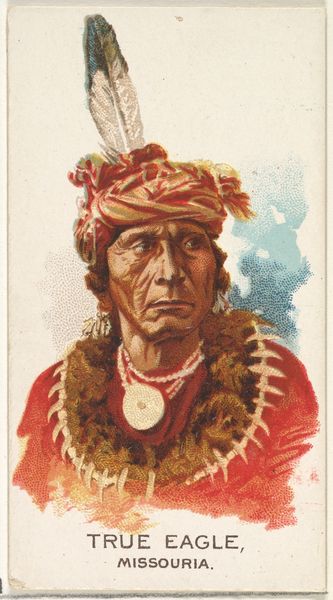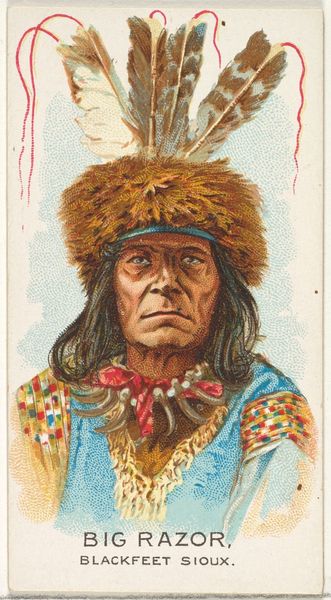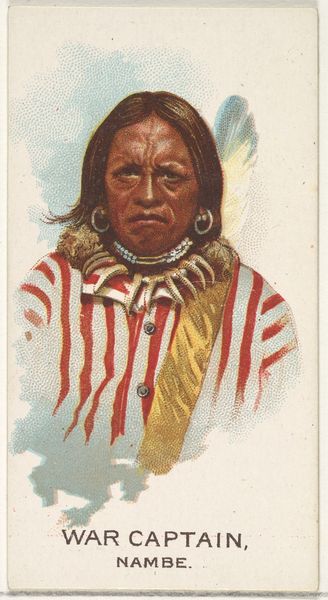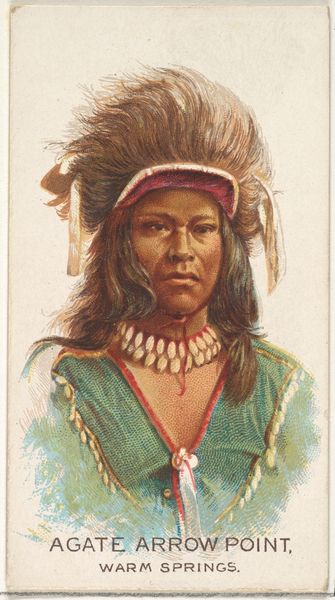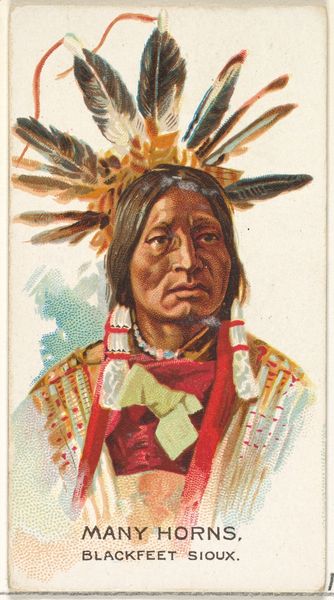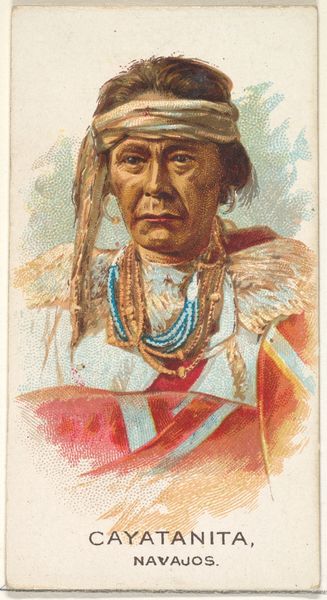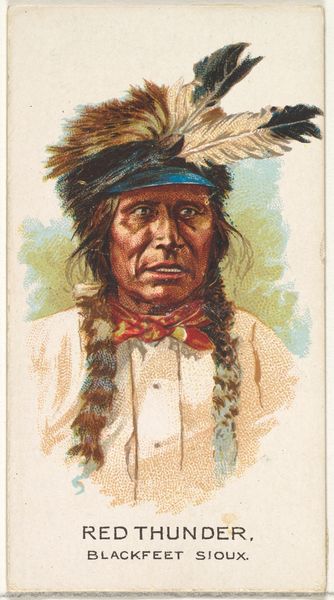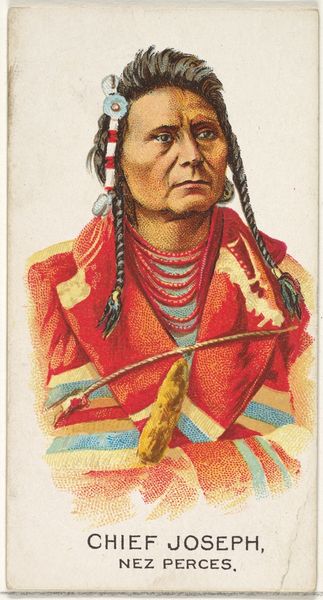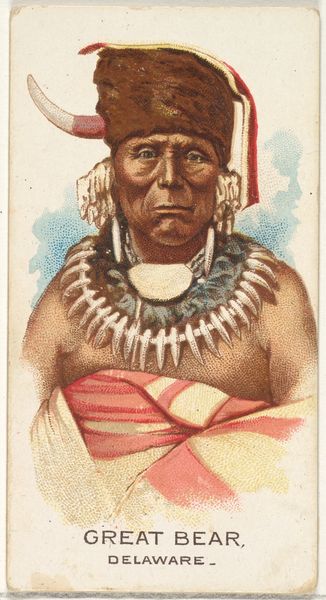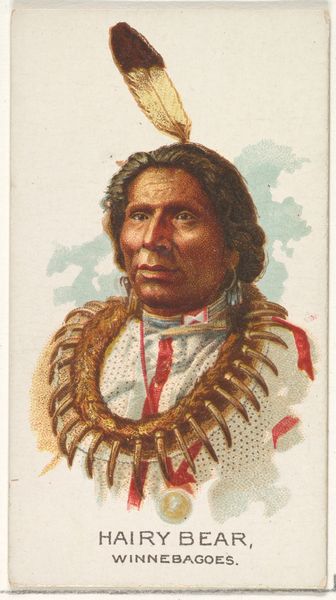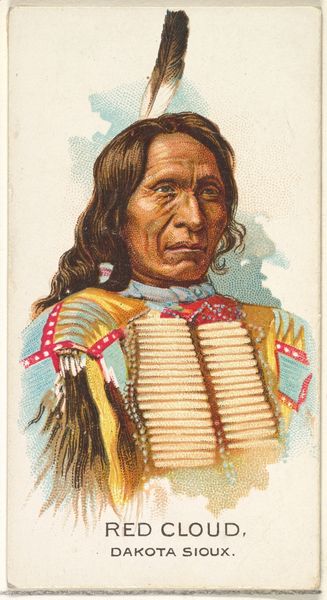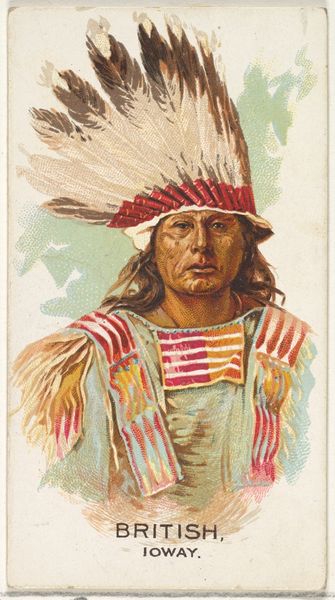
Keokuk, Sac and Fox, from the American Indian Chiefs series (N2) for Allen & Ginter Cigarettes Brands 1888
0:00
0:00
drawing, print
#
portrait
#
drawing
# print
#
coloured pencil
Dimensions: Sheet: 2 3/4 x 1 1/2 in. (7 x 3.8 cm)
Copyright: Public Domain
Curator: The image before us is a portrait from the “American Indian Chiefs” series, specifically depicting Keokuk of the Sac and Fox nation. It dates back to 1888 and was created by Allen & Ginter as part of their cigarette card collection. Editor: What strikes me immediately is the man’s gaze. It’s unyielding, direct. Despite the idealized presentation and the small size, his expression is serious. It makes one question the intentions behind this portrait’s creation. Curator: That’s astute. It’s crucial to recognize these cards existed within a colonial context, functioning as both collectables and tools for constructing popular narratives about Native Americans. The series contributed to widespread perceptions, frequently romanticizing or exoticizing indigenous people, but also playing a role in erasing their lived realities, political power and sovereignty struggles. Editor: The radiant halo behind his head reminds me of depictions of saints in Christian iconography. Then, there’s the necklace composed of teeth, potent symbols that immediately read to me as power and protection. I find these objects, taken together, offer a powerful—yet ambivalent—sense of the man depicted here. Curator: Absolutely. These commercial images appropriated and commodified aspects of indigenous identity, turning them into marketable symbols. And, when these cards were distributed in the millions alongside tobacco products, they would’ve ingrained particular ideas about indigeneity in the consumer's mind, which might be far from Keokuk's sense of self or of his culture. Editor: I think you’re right to remind us of the politics of these objects. While I focus on symbols and what they may reveal, it is useful to situate these images inside larger economic forces that influenced, even determined, the artwork in ways that the untrained observer may miss at first glance. Curator: Looking closely at these prints prompts me to ponder the legacies of visual representation and how they continue to shape our understanding—or misunderstanding—of historical figures like Keokuk. Editor: And for me, it reinforces how deeply visual symbols influence cultural narratives and the individual's psyche in ways that are often indirect and only barely perceived.
Comments
No comments
Be the first to comment and join the conversation on the ultimate creative platform.
